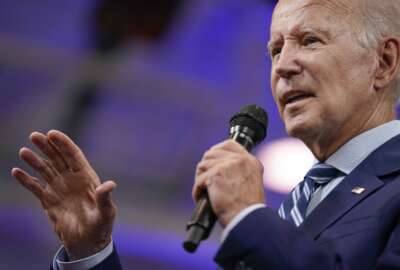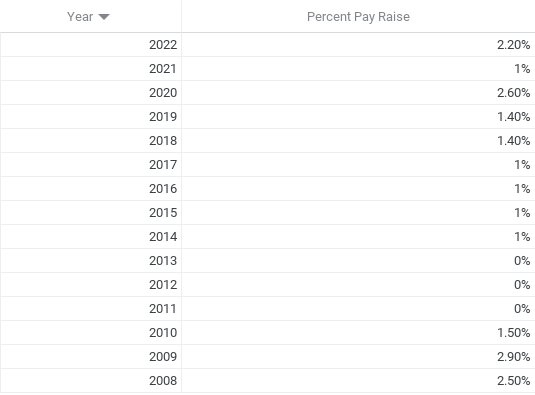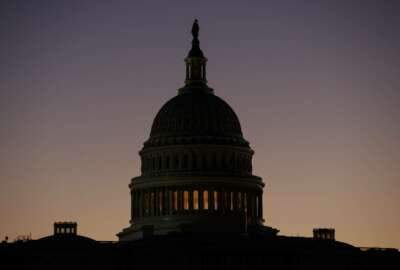
2023 pay raise: Who, what, when, where and why?
Pay raises help people pay bills. But they are so much more than that thanks to the miracle of compounding.
More often than not, federal workers hoping for a January pay raise are still dancing in the dark this time of the year. They don’t know if they are going to get any kind of pay hike in January, much less how much it will be. And if there is one, will it include a percentage pay differential for the majority of civil servants because they live and work in high-cost, high-wage cities? Especially at times like this when inflation is way, way up from the levels we’ve grown accustomed to for years. Decades actually.
For many, that means we resort to oldie-but-goodie clichés. Which often contain nuggets of wisdom, such as the slogan “ Don’t spend it until you’ve got it!” which grandpa, or somebody, probably laid on you at an early age. And it’s good advice. Hence, it’s been around for a long, long time. And worked well, if you heeded it. So while it is old hat, it is still good advice. But this year most of the mystery is gone. And the pressure is off.
Frequently, even by September, white collar federal workers still don’t know for sure if they are going to get a January pay raise. Or if so, the amount. In come cases they don’t get confirmation until January itself. And that can be a problem.
While pay raises are a big deal to most recipients, they are frequently an afterthought to presidents and members of Congress who determine the all important when-and-how-much part of the equation.
There have been years when feds got nothing. Other times, during periods of high inflation, feds got bigger boosts even though salaries are based on wage changes in the private sector, NOT inflation. Retired feds (and military personnel) get cost of living adjustments, or COLAs. Those still on the payroll get raises, not inflation-catchups.
Feds got 2.2% last January. In 2021 it was 1%. In 2020 2.6%. Workers got 1.4% in 2018 and 2019, and another 1% in 2017, 2016, 2015 and 2014. While not much, that was a lot more than the 0% (as in ZERO, zip, nada) in 2013, 2012 and 2011.
Pay raises help people pay bills. But they are so much more than that thanks to the miracle of compounding. Pay raises boost your eventual retirement income (based on your highest annual salary). And the amount you can put into your Thrift Savings Plan. And the amount the government will give you in matching contributions. Bottom line: A pay raise — of any amount — is a big deal. So what’s in the works?
President Biden recently informed Congress that he wants a 4.1% pay raise effective with the first pay period in January. That include an “average” 0.5% for locality pay. That means that feds in San Francisco-San Jose, Los Angeles-Long Beach, Houston, Dallas, Chicago, New York City, Seattle and metro Washington-Baltimore will get bigger raises than their counterparts in Ogden, Utah; Boise; or Paducah, Kentucky. That raise, if it happens, would be the same as they got in 2002. So it’s been a while!
About 2.1 million feds will get the raise. It will not go to postal workers whose salaries are determined by union contract negotiations.
There is a chance, a small one but a chance, that House Democrats will push for a 5.1% increase. That’s because they feel you deserve it. Also there are midterm elections coming up in November. Whatever the motive, it is nice to have the issue noncontroversial and almost settled this early in the year. To see how you’ve done, here are the Office of Personnel Management’s official pay raise numbers, from FederalPay.Org, from 2008 to 2022. Go there to find out the actual dollar impact on each raise for a GS 5 worker.

Nearly Useless Factoid
The largest beaver dam in the world is in Wood Buffalo National Park in Canada. It is about 800 meters long, or more than twice the length of Hoover Dam.
Source: Parks Canada
Copyright © 2024 Federal News Network. All rights reserved. This website is not intended for users located within the European Economic Area.
Mike Causey is senior correspondent for Federal News Network and writes his daily Federal Report column on federal employees’ pay, benefits and retirement.
Follow @mcauseyWFED




